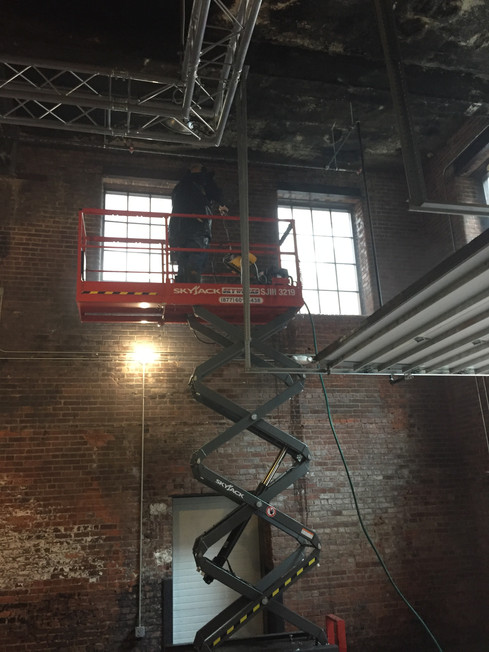Building a Kombucha Brewery
- Big Norwegian Kombucha
- Aug 2, 2021
- 3 min read
The Big Norwegian has been hard at work these past six months. With the help of family and friends, we have successfully cleaned the former boiler room at 500 Seneca, and we are now turning it into a kombucha brewery.
When we began, the site was being used sporadically for artistic displays and doggie daycare Halloween parties. The walls were soot-covered from years spent shielding several large coal boiler burners. Soon, we would be boiling large kettles of tea -- the irony was not lost on us.
We started on the cleaning and hiring contractors to give us ample electric service and our waterworks -- hot and cold water and a floor drain (spills happen!). I called upon my dad, Dave, and my brothers Dennis and Jack (recurring characters in this thrilling saga). Together we power-washed all of the brick walls and then the concrete ceiling too!
The walls and ceiling looked alive again and ready to watch over our operation for the next while. We clear sealed everything and got to work turning the clean box into a kombucha brewery.
I picked up a used brewhouse in Maine with my friend Chris. He was gracious enough to let me store all the new equipment inside the annex, his large art studio, until the new space was cleaned up. We brought the new equipment over and put it into place, and after months of planning and patience, this finally was starting to feel like a brewery!

The brewhouse is a 200-gallon Colorado Brewing systems nano-brew system. The system was created for brewing beer, with the aim to potentially brew either one 200-gallon batch (just over 6bbl), or two separate 100-gallon batches. The system is electric, with 6 total immersion heaters working to bring these kettles up to a boil. There is a nifty controller for programming temperature and time settings, and a stainless steel gantry that sits above the kettles to hold two electric hoists on trollies. The hoists lift each kettles' brew basket from inside after the tea is fully steeped (or mashed in grain, if you are brewing beer) -- the brew baskets are almost as large as the kettles themselves, and they have some weight to them when they are full.
Each kettle is equipped with a dedicated circulating chugger pump to help dissolve sugar and transfer the tea, and a plate heat exchanger to rapidly cool the sweet tea before supplying our fermenters. All in all, we are very pleased with this system thus far.
We also built some platforms for our fermenters to keep them up at a workable level.
Next we turned to building our own walk-in cooler. My wife's father, John, is a master carpenter, and he helped us build this beautiful cooler box. We decided to build our own box partly because our buddy Karl did it successfully at his brewery (and he has a way of taking the fear out of things) -- his was also much larger, so we felt confident that it would work. We also realized quickly after calling for quotes on new and used cam-lok coolers, that our budget preferred the custom build -- it turns out we saved more than half the cost of a used cooler! We built the walls and ceiling with 2x6 studs and then filled the stud/joist cavities tightly with 4" of foam core board, closed cell expanding foam, and a vapor barrier. The inside is currently getting a mold resistant sheet-rock wall with special waterproofing hardened paint for years of durable cleaning.
The cooler should be ready for the refrigeration system soon, and then for our taproom to grow off of the front. For now, I love being in there imagining it cold and full of delicious kombucha in brite tanks, kegs and cases.
We hope to have more updates for you soon as we enter into the cleaning and licensing portion of the endeavor. We are very excited to soon start working in this beautiful raw space, and to make the best damn booch you can find!

























Comments